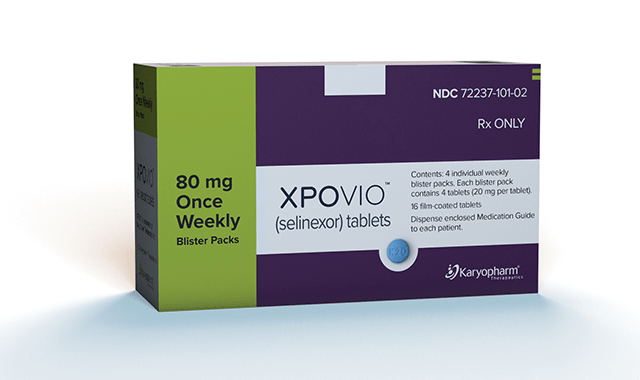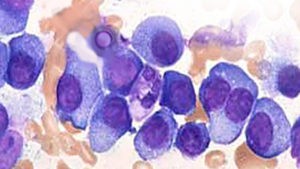
Recently Diagnosed or Relapsed? Stop Looking For a Miracle Cure, and Use Evidence-Based Therapies To Enhance Your Treatment and Prolong Your Remission
Multiple Myeloma an incurable disease, but I have spent the last 25 years in remission using a blend of conventional oncology and evidence-based nutrition, supplementation, and lifestyle therapies from peer-reviewed studies that your oncologist probably hasn't told you about.
Click the orange button to the right to learn more about what you can start doing today.
- You are here:
- Home »
- Blog »
- Multiple Myeloma »
- Multiple Myeloma Chemotherapy- Drug Approvals
Multiple Myeloma Chemotherapy- Drug Approvals

“If In the last 16 years multiple myeloma has had 10 drugs approved. All of these chemotherapy regimens have had two things in common…”
The content below about the rapid development of multiple myeloma (MM) chemotherapy was written by fellow MM survivor Gary Peterson. I don’t know Gary personally but I think his website is excellent and he posts helpful content for MM patients, survivors and caregivers.
It is essential for MM patients to understand that:
A) myeloma is a rare cancer and that
B) there has been an outsized drug development for our rare cancer.
The more MM drugs that have been approved by the FDA, the more possibilities we have to slow our blood cancer.
Having said that, I have to add a couple of ideas that Gary didn’t mention.
- MM is incurable. Patients must therefore think outside the conventional therapy box. Evidence-based non-conventional therapies must be a part of our MM lifestyle. In my opinion anyway.
- Chemotherapy is toxic. Less is more. Human beings can take only so much toxicity before adverse events overwhelm us. Consider integrative therapies that promote immune health as well as kill MM.
- Many of the drug approvals below are based primarily on increased progression-free survival. This basically is the length of our first remission. While achieving a long first remission is great, I believe that conventional oncology and the FDA should focus on overall survival aka length of life.
To learn more about evidence-based, non-toxic myeloma therapies, scroll down the page, post a question or comment and I will reply to you ASAP.
Thank you,
David Emerson
- MM Survivor
- MM Cancer Coach
- Director PeopleBeatingCancer
Recommended Reading:
- Multiple Myeloma, CAR-T Cell Therapy and Heart Failure-
- Celgene Spanked for Fixing Multiple Myeloma Drugs Thalidomide, Revlimid Prices
- Multiple Myeloma- How to Find and Work with the Best MM Specialists
If History Repeats Itself, The State of Myeloma New Drug Development Is STRONG! The Myeloma Miracle – Part 3
“If In the last 16 years multiple myeloma has had 10 drugs approved. All of these drugs have had two things in common, they all were awarded an FDA Orphan Drug(OD) designation, and secondly they all had one of the additional FDA designations of Fast Track, Breakthrough Therapy, Accelerated Approval, or Priority ReviewL.
NO new drug has ever been approved for myeloma in 16 years without at least two of these FDA drug approvals. To be an orphan drug it must first affect no more than 200,000 patients in the US. The FDA’s Office of Orphan Products Development is tasked to evaluate scientific and clinical data from companies to identify which therapies can improve the lives of people suffering from rare diseases. Orphan status is given to drugs and biologics defined as “those intended for the safe and effective treatment, diagnosis or prevention of rare diseases/disorders”. The other destinations are designed to speed the availability of drugs that treat serious diseases, especially when the drugs are the first available treatment or if the drug has advantages over existing treatments. The Food and Drug Administration has developed four distinct and successful approaches to making such drugs available as rapidly as possible:
- Priority Review (PR)
- Breakthrough Therapy (BT)
- Accelerated Approval (AA)
- Fast Track (FT)
A more in depth description of these additional designations and the advantages of getting them is available if you CLICK HERE.
Those drugs approved for use in mutiple myeloma in the last 16 years and the date of FDA approval for clinical use is as follows:
Velcade 2003 Pomalyst 2013 Ninlaro 2015
Revlimid 2006 Faradak 2015 Darzalex 2015
Doxil 2007 Empliciti 2015 Selinexor 2019
Kyprolis 2012
How can history repeat itself? First if we find what drugs which have at least two FDA designations but are not as yet approved by the FDA for clinical use, this just may be a very good list to see what the next FDA approvals likely will be. I count 7 drugs which have an orphan drug and one other FDA designation. For all of the drugs above which have been approved the average time from orphan drug designation to FDA clinical approval is 4 years, as compared to an average of 8 years without these two designations. A remarkable feat of twice as fast to market. Those 7 new drugs are with dual FDA designations are:
Drug Company Designations Description
AMG420 Amgen OD&FT (BCMA) Bispecific T-Cell Engager
(BiTE®) Antibody Construct
CLR131 Celectar OD&FT Radiotherapeutic phospholipid drug
conjugate (PDC™)
GSK2857916 GlaxoSmithKline OD&BT (BCMA) antibody-drug
conjugate (ADC)
bb2121 Celgene OD&BT BCMA chimeric antigen receptor
CAR T
Galinpepimut-S Sellas OD&FT Immunotherapy vaccine to elicit a
strong response against WT1
P-BCMA-101 Poseida OD,FT&BT Autologous chimeric antigen receptor
(CAR) T-cell therapy
Melflufen Oncopeptides OD&AA Drug activated by aminopeptidases,
overexpressed in myeloma
Many more drugs have an OD designation, but as yet have not received the second designation. So additional likely candidates could be added if and when they receive an additional designation by the FDA. This is remarkable when you consider the average orphan disease has less than one approved drug for each of the 6000 orphan diseases!
If history repeats itself, I would argue we have a high probability of having 7 new drugs approved for the treatment of myeloma within 4 years or a rate almost 3 times that of the recent historic rate of myeloma drug development.
This would be absolutely miraculous! I must thank the FDA with government support for putting in place the Orphan Drug Act, but again there is a synergistic magical sauce in the myeloma care community which has made myeloma a template for rare disease drug development. All the players in this community which includes the researchers, academics, myeloma specialists, patients, caregivers, patient advocates, large and small drug companies, supportive care teams, NCI, FDA, IMF, MMRF, LLS, Myeloma Crowd, and all those I may have left out, work in a talented cooperative team environment!”


